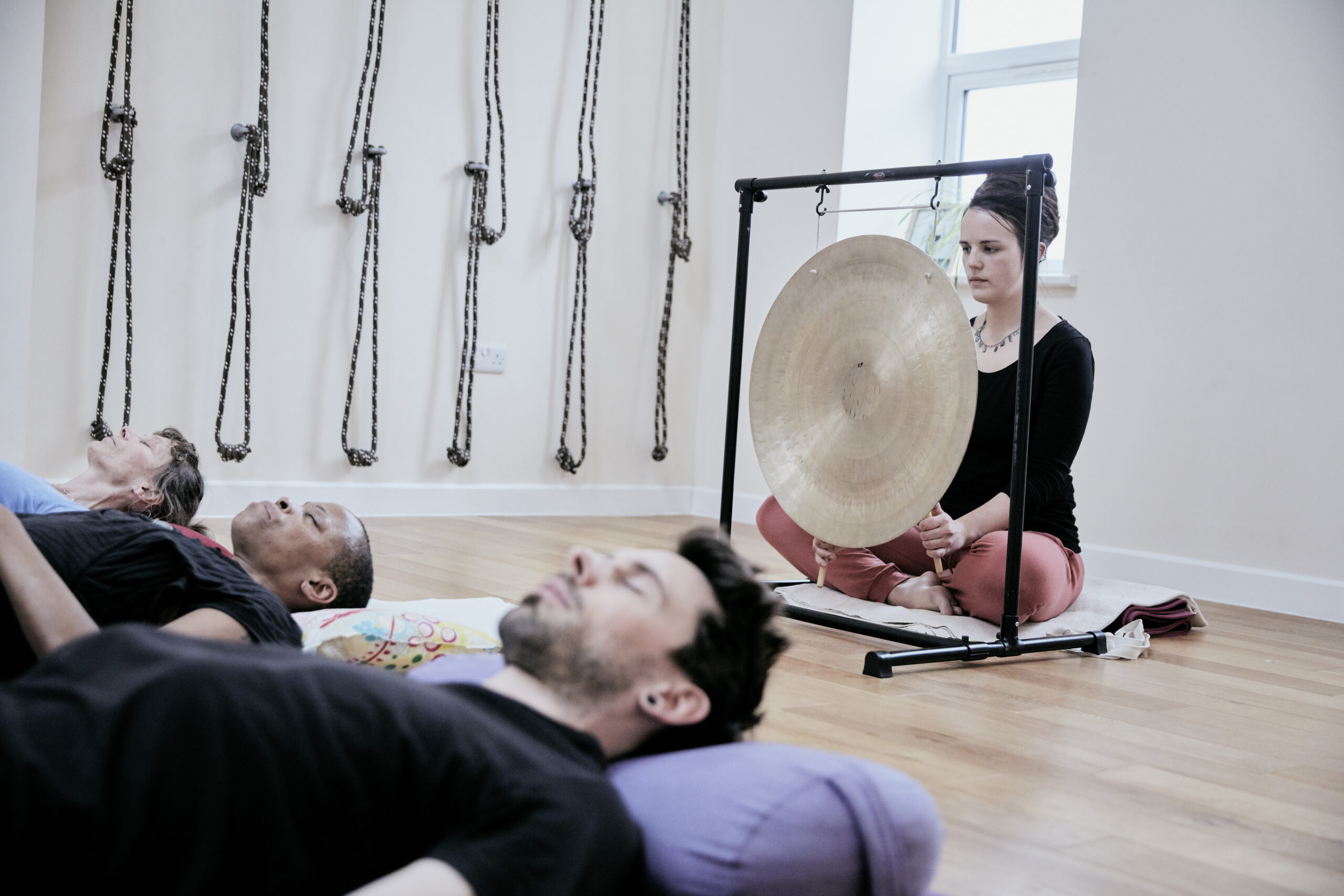Sound has been used for thousands of years as a tool for healing, meditation, and spiritual connection. From ancient gongs in Asia to chanting rituals across cultures, vibrations have always carried deep meaning for human beings. In recent years, the practice of the sound bath has grown in popularity, offering people a chance to rest, recharge, and reconnect. But what is a sound bath, and why has it become such a profound wellness experience?
What is a Sound Bath? A Modern Path to Ancient Healing
A sound bath is a deeply immersive experience in which participants are “bathed” in sound frequencies created by instruments like crystal singing bowls, gongs, chimes, or drums. Unlike traditional music, which is built around rhythm and melody, sound baths focus on tone, vibration, and resonance. These waves move through the body, encouraging relaxation, releasing stress, and even unlocking emotions that might be hidden beneath the surface. When people ask, what is a sound bath?, the answer often includes both science and spirituality. Scientifically, sound affects brainwave activity, slowing patterns into relaxed states similar to deep meditation. Spiritually, many describe the session as a journey inward, where sound becomes a bridge to self-awareness and emotional clarity.
What is a Sound Bath? The Experience of Participation
Attending a sound bath does not require any prior knowledge or skill. Participants usually lie down on yoga mats, often covered with blankets and eye masks for comfort. The facilitator then plays an array of instruments in patterns designed to create overlapping frequencies. These vibrations do not require active listening; instead, they wash over the body and mind, creating an environment of surrender and stillness.
The Physical Setting
Most sound baths are held in serene environments such as yoga studios, wellness centers, or even outdoor spaces. The atmosphere is intentionally quiet and supportive, encouraging participants to feel safe and at ease.
The Role of Breath and Intention
Before the instruments begin, facilitators often invite people to focus on breathing or set an intention. This small act helps the mind shift from daily stress toward openness and receptivity.
The Science Behind Vibrational Healing During Sound Baths
Asking what a sound bath is often leads to an exploration of the science behind how sound interacts with the human body. Vibrations travel as waves, and when those waves enter the ears and skin, they can influence the nervous system. Studies suggest that sound frequencies can help slow heart rates, lower blood pressure, and reduce stress hormones, such as cortisol. On a neurological level, sound baths often bring participants into an alpha or theta brainwave state. These states are linked to creativity, meditation, and deep relaxation. Some researchers even compare the impact of a sound bath to the benefits of mindfulness meditation, showing that sound can provide a nonverbal yet powerful route to well-being.
The Spiritual Dimension of a Sound Bath
While science explains part of the story, many people turn to sound baths for spiritual nourishment. What a sound bath is cannot be fully explained without acknowledging the inner shifts that participants report. Many describe experiencing a sense of timelessness, feeling connected to something larger than themselves, or releasing old emotions that no longer serve them.
Sound as Energy Work
For those who practice energy healing, sound baths are viewed as a way to realign the body’s energetic field. Vibrations can be felt not just in the ears but throughout the entire being, resonating with what some traditions refer to as chakras or energy centers.
A Journey Inward
Participants sometimes liken the experience to traveling through dreams or visions. In the absence of words and conscious thought, sound becomes the vehicle for inner exploration.
Common Instruments Used for a Sound Bath
Understanding what a sound bath is also means recognizing the tools that create the experience. Each instrument carries a unique vibration and is chosen for its ability to resonate deeply with the human body.
Crystal Singing Bowls
Made from quartz crystal, these bowls produce pure tones that feel like waves of light passing through the body. They are often tuned to specific frequencies that correspond to energy centers.
Gongs and Chimes
Gongs provide deep, layered vibrations that can feel both grounding and expansive. Chimes, on the other hand, offer lighter, sparkling tones that uplift and clarify.
Drums and Rattles
Rhythmic instruments create grounding beats that connect participants with the body’s natural pulse, encouraging release and movement of energy.

Benefits of Sound Baths Reported by Participants
Those who have attended often find themselves answering, What is a sound bath? By sharing the personal benefits they experienced. Reported outcomes include reduced stress, improved sleep, enhanced focus, and a greater sense of peace. Some people also experience physical relief, such as reduced muscle tension or headaches. The benefits are not only short-term. Many describe lasting changes in their ability to manage anxiety or respond calmly to life’s challenges. By allowing the nervous system to reset, sound baths may open the door to long-term emotional resilience.
Misconceptions and Clarifications About Sound Baths
Because the practice blends science, spirituality, and wellness trends, misconceptions are common. Some assume that sound baths are religious or tied to specific belief systems, when in reality they are inclusive and accessible to anyone. Others believe it is simply music therapy, but the approach differs in that it emphasizes resonance and vibration rather than structured melody.
Is It a Concert?
Unlike concerts, there is no performance element. Participants are not expected to clap or interact; instead, they receive the sounds passively.
Do You Need Musical Ability?
No skill is required. The sound bath is about receptivity, not participation in creating music.
Preparing for Your First Sound Bath
For those curious about what a sound bath is, preparation is simple. Wear comfortable clothing, bring a mat, and carry a blanket or pillow for added comfort. Arriving with an open mind and a willingness to relax ensures the best experience.
Hydration and Rest
Since sound vibrations affect the body’s systems, being well-hydrated helps energy flow smoothly. A good night’s sleep beforehand also enhances receptivity.
Setting an Intention
Even a simple intention, such as “I allow myself to relax,” can create a more meaningful and personalized experience.
Why Sound Baths Matter in Modern Life
The rise in popularity of sound baths reflects the collective need for stillness in a world filled with noise and distraction. When people ask what a sound bath is, the answer often includes its role as a sanctuary—a moment of pause in an otherwise demanding schedule. In a culture driven by productivity, sound baths remind us that healing often comes from slowing down. They invite us to release the pressure to perform, and instead allow sound to move through us, restoring balance and harmony.
Is a Sound Bath Right for You?
Ultimately, what a sound bath is is both simple and profound. It is a practice where sound becomes medicine, vibration becomes a language, and stillness becomes a teacher. Whether approached scientifically, spiritually, or simply as a moment of rest, sound baths offer something universal: the chance to feel whole again. By immersing ourselves in tones that transcend words, we rediscover a timeless truth—healing can be as simple as listening.
Visit The Living Church of San Francisco’s blog to immerse yourself further in sound baths, meditation, and other methods of gaining inner peace.



